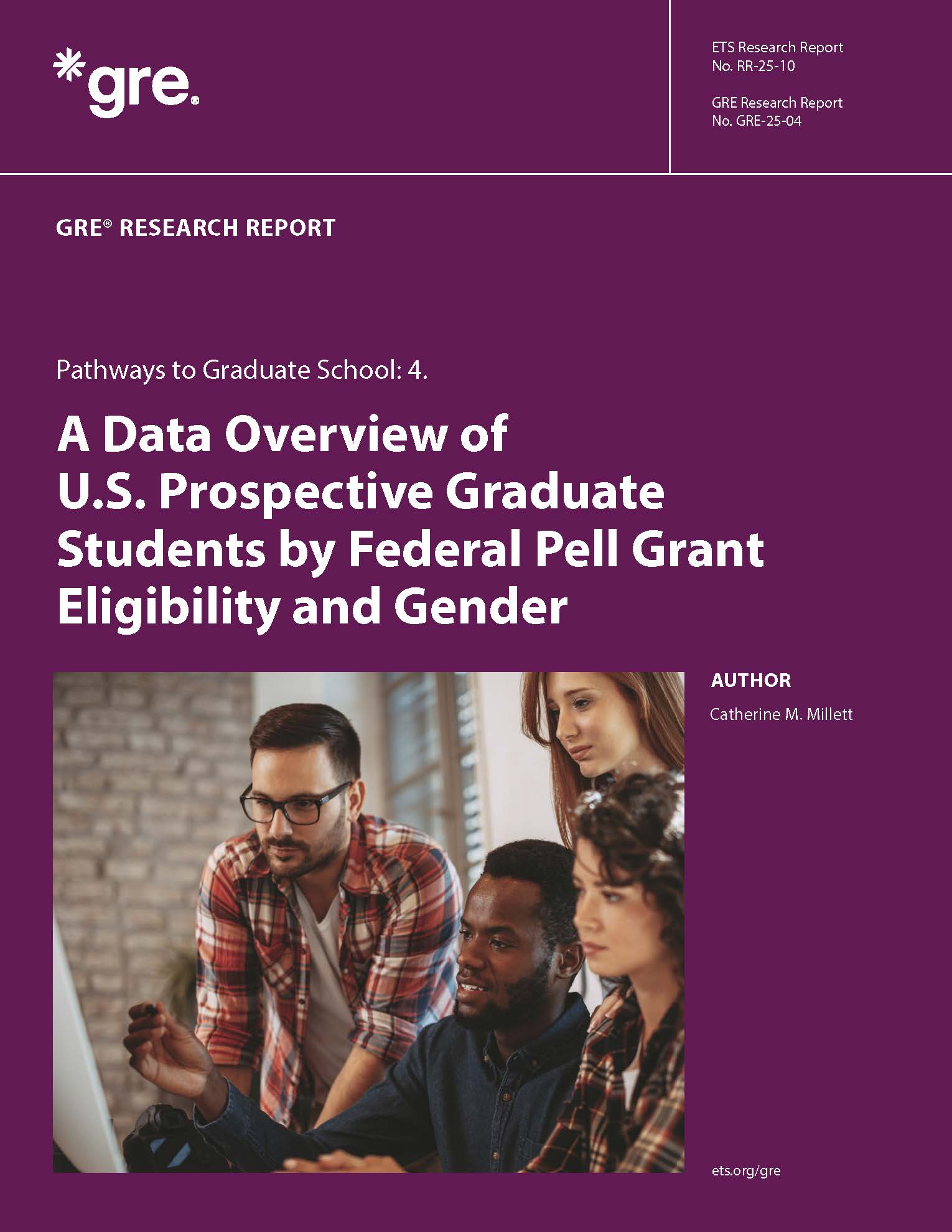Pathways to Graduate School: 4. A Data Overview of U.S. Prospective Graduate Students by Pell Grant Eligibility and Gender
DOI:
https://doi.org/10.64634/8c704s43Keywords:
Pell Grant, federal grants, graduate school applications, test measures, GRE®, prospective graduate students, demographics, work experience, undergraduate experience, graduate enrollment, graduate programAbstract
Today, the Federal Pell Grant program is ubiquitous in conversations about how to pay for undergraduate education. Since 1982, it has supported more than 212 million students, making it a cornerstone of higher education access in the United States. However, what happens next for Pell Grant recipients who earn bachelor’s degrees—especially when pursuing graduate study—remains largely unexplored. This knowledge gap leaves questions unanswered about how gender and financial need shape the path beyond college. The 673,573 individuals who are U.S. citizens, who provided gender and their undergraduate Pell Grant eligibility information, and who had scores on all three GRE® General Test measures are the subjects for this descriptive study, one of a series of five such reports. GRE General Test data from July 1, 2016, to June 30, 2021, supplemented with U.S. Department of Education and U.S. Census data, are analyzed. These individuals, referred to as prospective graduate students (PGS), are examined through six core questions: (a) Who were the PGS? (b) Where did they reside? (c) What were their education and work experiences? (d) What were their undergraduate experiences? (e) What were their plans for graduate study? and (f) What were their emerging graduate school choice sets? Key findings include the following: (a) 50% of Pell-eligible PGS were White, and 75% of non-Pell-eligible PGS were White; (b) fewer Pell-eligible PGS were enrolled in college; (c) more Pell-eligible PGS were enrolled at in-state institutions; (d) substantially more Pell-eligible PGS were first-generation college students compared to their non-Pell-eligible peers; (e) more men than women in both Pell eligibility profiles majored in the physical sciences and engineering than in the life sciences; (f) more than 90% of PGS of both Pell eligibility profiles earned a 3.0 or higher grade point average in their undergraduate majors; and (g) most PGS were considering at least one graduate school in their states of residence. The report concludes with recommendations for future research and practical applications, particularly in the graduate school application process.
Suggested citation: Millett, C. M. (2025). Pathways to graduate school: 4. A data overview of U.S. prospective graduate students by Pell Grant eligibility and gender (Research Report No. GRE-25-04). ETS.

Downloads
Published
Issue
Section
License
Copyright (c) 2025 Educational Testing Service

This work is licensed under a Creative Commons Attribution-NonCommercial-NoDerivatives 4.0 International License.

